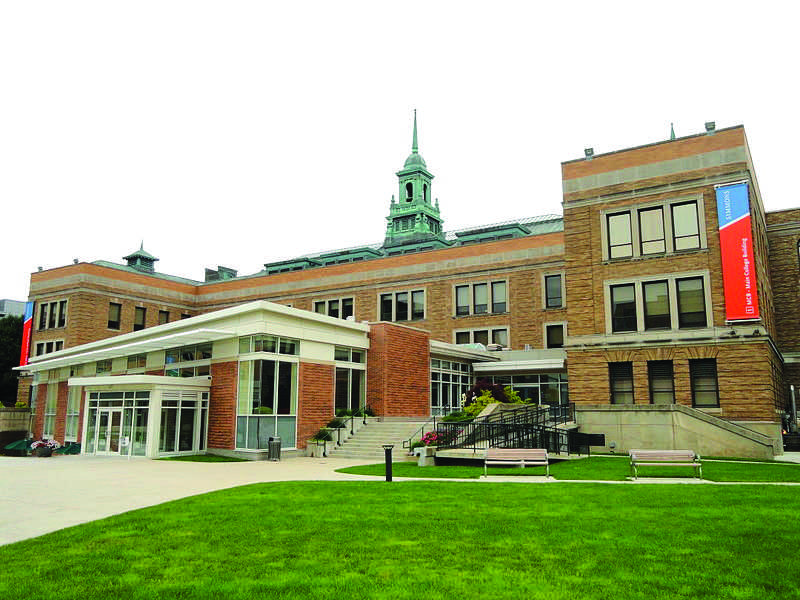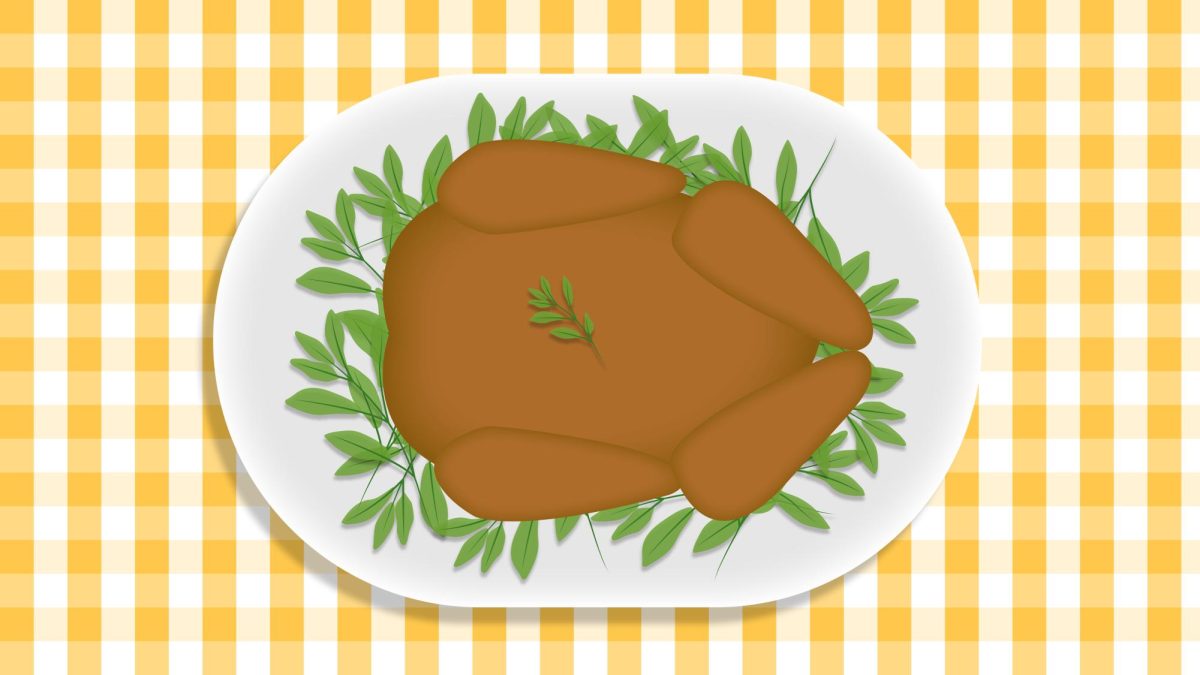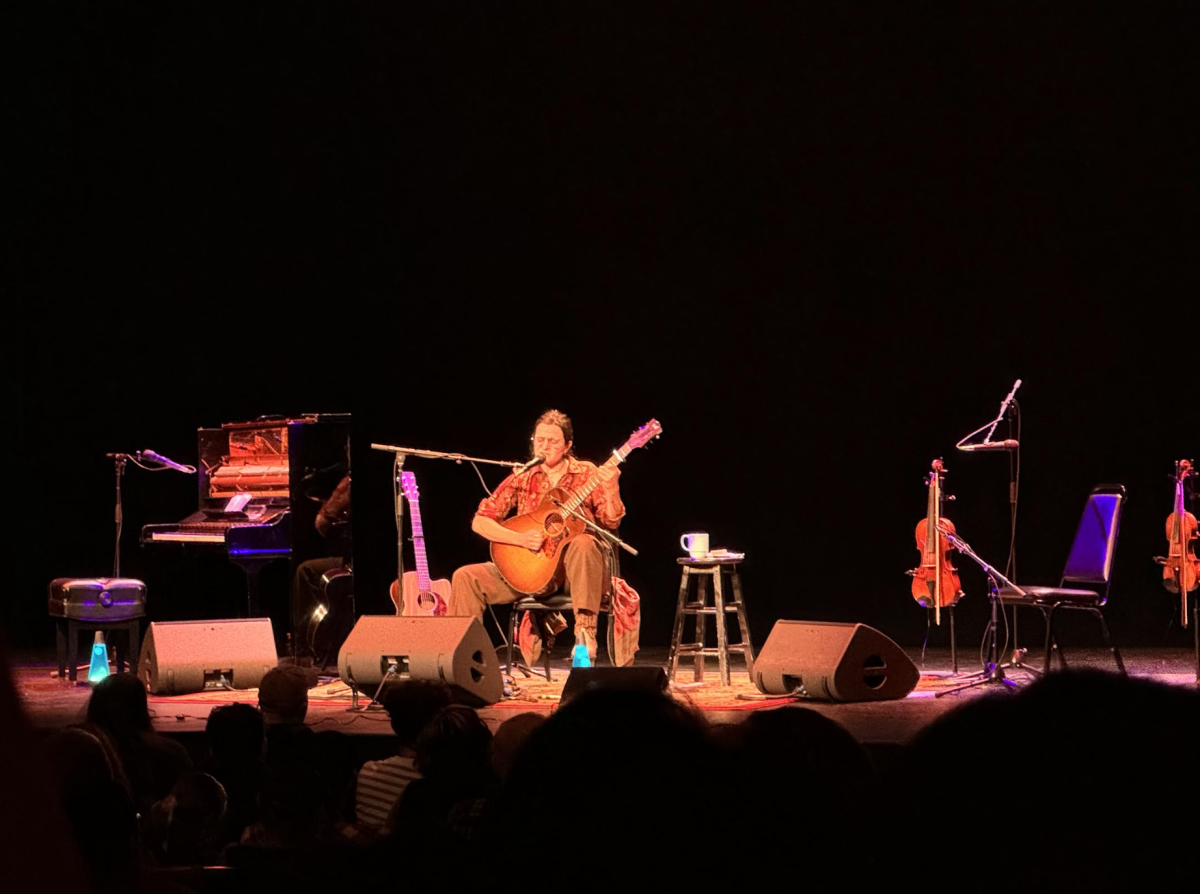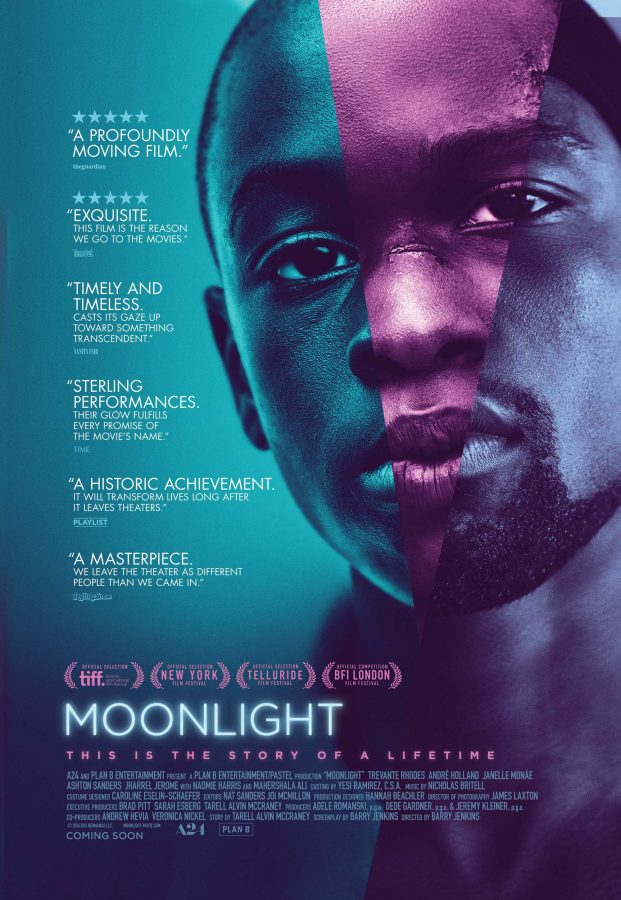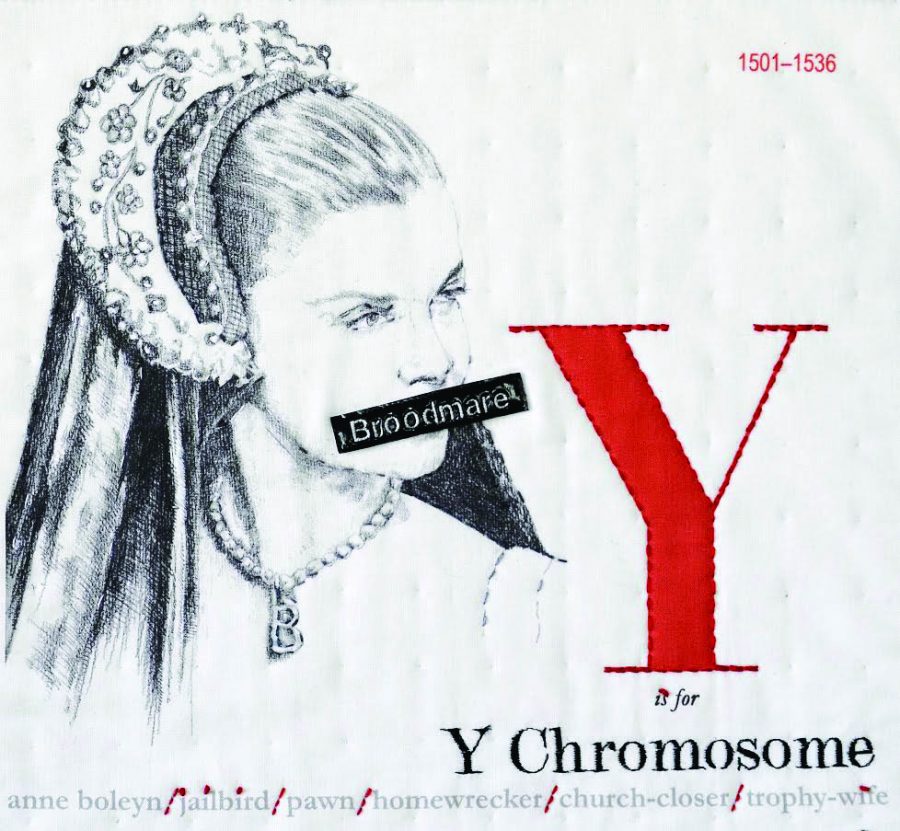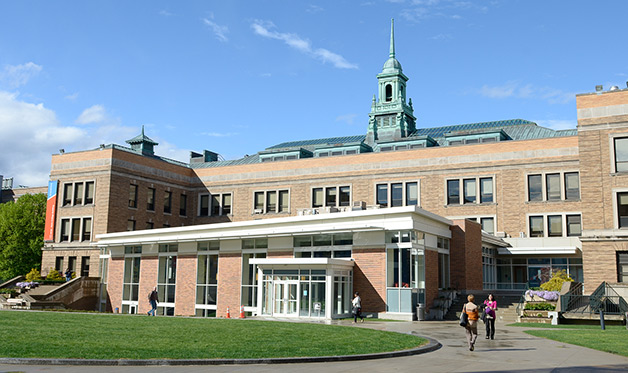By Ellen Garnett
Staff Writer
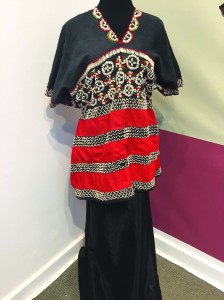
Brilliant colors and complex, elegant patterns that communicate more about social stages of life than simply aesthetic beauty are on display in the art exhibition “Skirting Identity: Women and Weaving in Laos, Thailand, and Myanmar” in the Trustman Art Gallery until April 16.
“Skirting Identity,” an exhibit created by Margaret Hanni, Ph.D., Chair of the Department of Art and Music, opened on Tue March 17 and presents the various weaves and garments crafted by women from Laos, Thailand, and Myanmar. In fact, the women who weave the garments also grow the cotton and make the numerous dyes that go into the weaves.
Dr. Hanni’s exhibit goes beyond the surface of the weaves and into the symbolism behind the different patterns. These patterns illuminate the social constructs in Southeast Asian life, such as “mediating courtship and marriage, social and economic status, celebrate good harvests, designate new households, protect newborns, help heal the sick, honor and guide the dead,” according to Dr. Hanni’s exhibition booklet.
“In 20 years, nobody else might be making those skirts and nobody will know what they are,” said Dr. Hanni regarding her motivation to share the culture behind Southeast Asian weaves by starting her own collection. Dr. Hanni further emphasized her love for the women and meanings behind the culture by jokingly pointing out, “It helps that I love to shop.”
“Skirting Identity” delves into the symbolism behind certain patterns that help delineate the purpose of the weaves. For example, common symbols include the ngueak, kaap khoam, saang-hong, human figures, and the tree of life.
The ngueak, or river dragon, offers protection from evil spirits and is common in Laos temples and textiles. Kaap khoam is a diamond-shaped motif that “symbolizes a lantern that lights a shaman’s path to the spirit world” and “in a Buddhist ritual, it represents an opening to knowledge and enlightenment,” as described in the exhibit. Saang-hong is another mythical creature that is “half bird, half elephant [and is] a symbol of strength.” Human figures tend to represent ancestors and the tree of life symbolizes fertility and abundance.
After studying the various patterns, understanding the weaves becomes a matter of deciphering the symbols, which function similarly to hieroglyphics. The symbols communicate various stages of life, such as marital status.
A skirt with a striped waistband typically means the woman wearing it is single, while a woman wearing a skirt with a plain, indigo, or red waistbands is married in the Lao-Tai community. It is important to note, however, that there are various ethnic communities that demonstrate status in different patterned weaves.
Usually, a higher level of weave complexity conveys a higher status for the woman’s family, which makes her more attractive as a prospective wife. According to the “Skirting Identity” booklet, “In both Chin and Lao-Tai culture […] her skill is traditionally seen as evidence of important character traits like self-discipline, maturity, ingenuity, and carefulness.”
As an interesting side note that further uncovers Simmons’ connection with Thailand, Srinagarindra née Sangwan Talapat, the mother of the current King of Thailand, Bhumibol Adulyadej, studied at Simmons College in around 1918 to become a nurse. She did not finish her degree because she became pregnant with Bhumibol, the current king. However, in June of 1989, Simmons College representatives flew to Thailand to present her with an honorary doctorate degree.
To learn more about Dr. Hanni’s “Skirting Identity” exhibit, visit the Trustman Art Gallery on the fourth floor of the Main College Building, which will be up until Thursday, April 16.




